He may only be 31 years old, but British menswear designer Daniel Fletcher has already garnered the acclaim of fashion critics and aficionados alike – both with his own label, Daniel w. Fletcher, and as Menswear Artistic Director for iconic Italian brand Fiorucci.
Fletcher’s eponymous label – which you’ll have seen being sported by entertainment giants like Harry Styles and Sam Smith, as well as gracing the pages of fashion glossies everywhere – has become a leading face in contemporary menswear. With credentials that include a degree from the prestigious Central Saint Martins, a stellar showing on the Netflix show Next in Fashion, and stints in Lanvin, Louis Vuitton and JW Anderson, the designer has plenty to say about his work, upcoming projects and many lessons learned. Here’s what he told us.
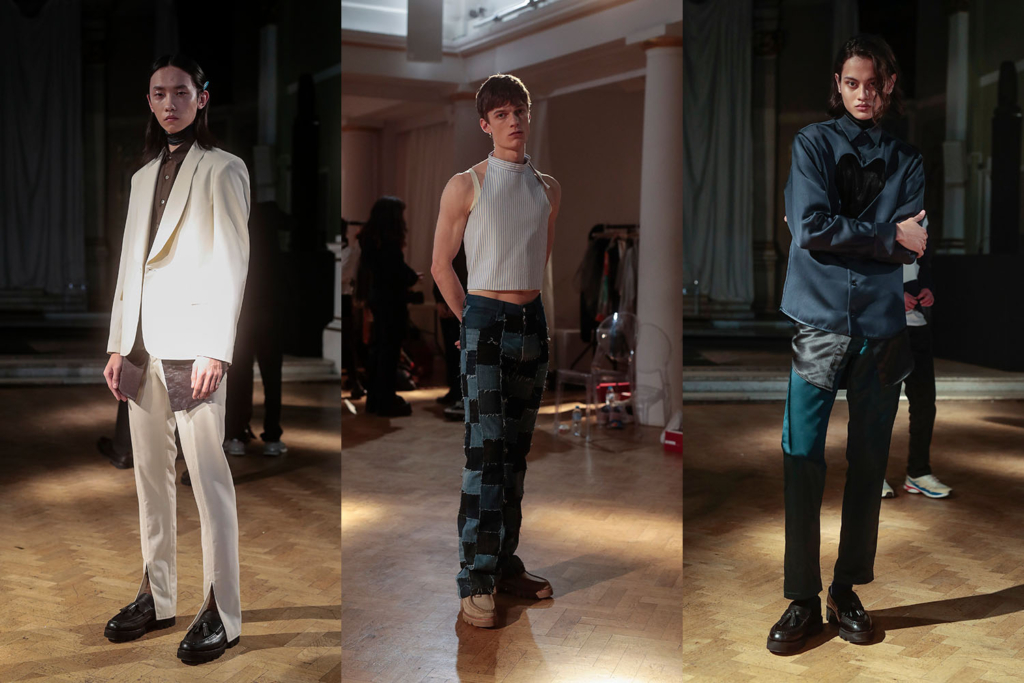
What were you doing right before this interview started?
I was sending invoices to wholesale accounts (laughs). That’s the less glamorous side of being a fashion designer. I don’t think anyone ever tells you this, but running your own label means you gotta do all the business side of it as well. But I don’t mind. If doing that allows me to carry on designing and creating, then that’s okay with me.
Can you walk us through a regular day in your life?
A regular day is very difficult to describe, actually, because every day is different.
With my brand and Fiorucci, I split my time between two offices. The Daniel w. Fletcher studio is two minutes from my house, so I’ll start the day by picking up a coffee on the way in and then going to the studio just over the road. Then, if I’m at Fiorucci, that office is in Soho, so I cycle into central London for that. But I’m not necessarily in an office every day. I have a lot of meetings, I go and meet suppliers… You really are involved in everything as creative director and founder. Normally, we will have a photoshoot every week or every other week, as well.
You can kind of spread it out by season. So I’ll start a season with a research period and working in development. Then we get to sampling and seeing clothes come together. We do a lot of fittings, and at the end of the season, that’s when we share it with the world, whether that’s a show or a lookbook. After that, production starts, and that’s when we make it so that people can buy it as well. Besides working on a collection every six months for my own brand, I do four a year for Fiorucci. In between that, there are always special projects, collaborations, capsules – so there’s quite a lot of things happening all at once.
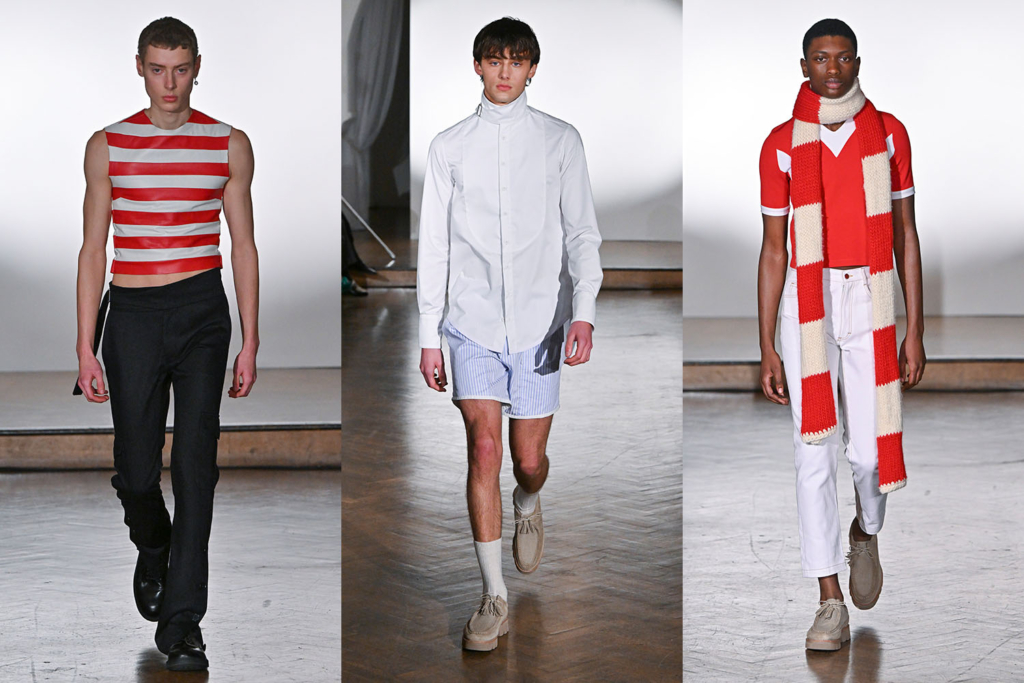
How does your work for Fiorucci differ from your work at your namesake label?
Fiorucci has got such a unique identity. It’s quite different, visually, from what I do at my own label. There’s a crossover in terms of some of the styles, and of this idea of using heritage as an influence, but in my label that heritage is my own personal heritage, which comes from traditional British menswear, whereas Fiorucci is steeped into this 1970s New York and Italian disco era that is so unique. They just feel completely different. When I’m researching and designing, I will look at something and be like, “Well, that’s Fiorucci” or “That’s Daniel Fletcher” – there’s always a clear line between those two.
When it comes to balancing it, in terms of schedule and things like that, having two offices helps compartmentalise what I’m working on. There’s a lot of days where I do work on both, but that’s the nature of being a designer and doing collections and seasonal releases – it’s constantly moving and changing, so you just take it as it comes.
Menswear is often ignored in favour of women’s fashion. As one of the most important faces of menswear design, do you think men have it easier when it comes to dressing?
I think men respond best to something that they can somehow associate with. I think, in womenswear, people are a bit bolder, because you don’t need to know where it’s come from, you just accept it for what it is, and what it is is fashion. Whereas in menswear, I think, you want to have a connection: “Oh, yeah, that resembles the suit my dad wore when he got married,” or, you know, this kind of slight familiarity. What I try to do with my brand is take that familiarity and then take it to a new place, but still keep that nod to something that is more heritage- and tradition-based.
Is that why you chose to design for men, familiarity?
Yeah, absolutely. I could see that men have this desire to push their wardrobe slightly. It was a challenge: how far can you push it while still keeping that nod to something that you’ve known before? It was a challenge I really wanted to take on, because, when I was on art foundation, the first project I did was womenswear, and I found it a bit overwhelming. There were no limitations there, you could do anything you wanted. I thought that, actually, if you put a few restrictions in place, it challenges you to come up with something more creative and slightly more interesting, rather than it being anything.
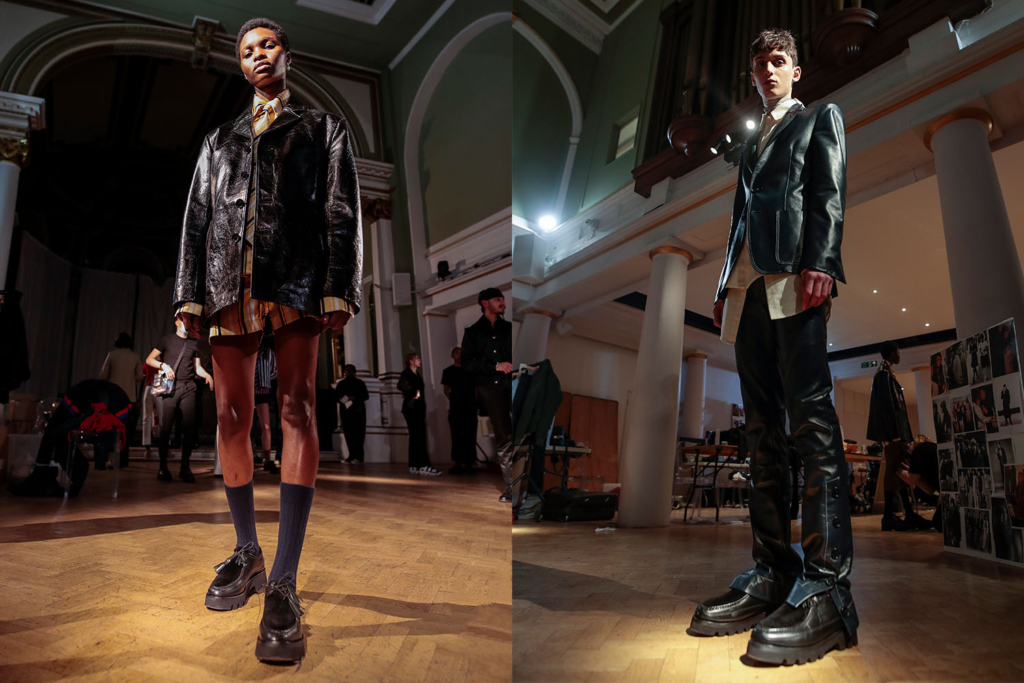
Do you think you’ll ever have a line specifically for women?
More than 50% of our customers are actually women. I think the attitude towards gendered boundaries in clothing has really shifted, and people are open to wearing clothes that were not necessarily designed for their gender. I just treat the collections as genderless now. We put women on the runway in February, but, to be honest, the clothes were very much the same as the men’s, so they could have gone either way. I don’t think there will ever be a full show where it’s just women, but catering to them is something that we’ll do.
Where do you usually draw inspiration from?
For my own brand, it’s a lot of looking through old magazines and books, and taking a look at traditional British menswear as a starting point. Because it’s something I know, you know? So I can relate it to my youth or to the way I grew up. It’s also a feeling as well, I’m always responding to what’s going on around me and to the mood that I’m in every season. My last collection was inspired by my dad, by the musicians he used to take me to see when I was younger, and by things from his wardrobe. It’s always very personal.
Is there any habit you’ve acquired that boosts your creativity?
Painting, actually. It’s something that I don’t get a lot of time to do, but if I have some time off or, you know, a few spare hours in the studio… ‘Cause I spend so much of my time now on a computer, so to do something practical, or with my hands, feels freeing.
The same can be said of getting on a sewing machine and actually sewing a garment. That’s actually something I really realised when I was doing Next in Fashion, because I was there sewing every day and making clothes, and the turnaround was so fast. We would get a brief and then two days later we would have a finished garment. And I’d have sewn that myself, so seeing that come to life from a sketch to fabric to garment to seeing it on a runway in a short time was really rewarding. It was kind of like, “Well, look at what you can do”.
Now everything’s a lot longer, there will be meetings and planning and reasons for doing everything. It will get sent to an atelier and they will make it, and then it will be a few weeks before the idea on a piece of paper becomes a real, tangible item. Whipping something up myself – I always get a boost from that.
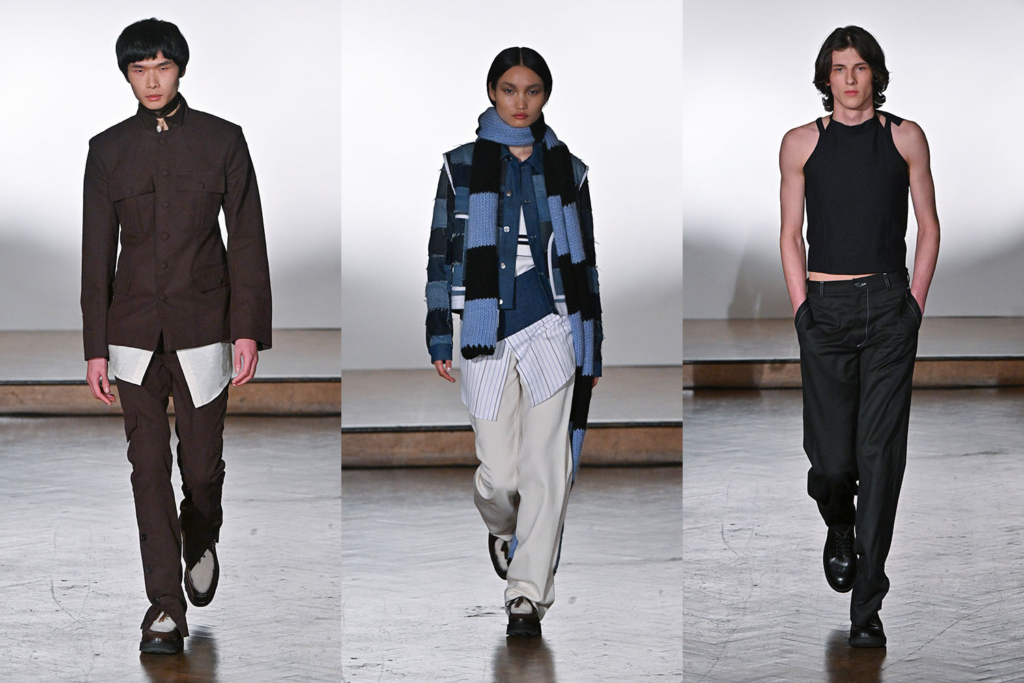
You’ve achieved a considerable amount of success at a very young age. How did you get your start in fashion?
So I was a little bit cheeky with it. Before I started university, I wanted to understand a little bit more how the industry worked, so I looked up the London Fashion Week website, found some designers that I liked and called up a PR agency, and was like, “Hey, do you need an intern?” And they were like, “Yeah, sure.” Nobody even picks up the phone these days, I’m surprised they even had an office phone. But I called them up and said I’d come in and do it for free.
I did that internship, and they introduced me to another designer who I then did a second internship with, and I think that helped me get into university. And then whilst I was in university, I did as many internships and gained as much experience as I could, just so I had as broad a view of the industry as possible, and so I could absorb as much knowledge as I could at that point. And I think my real break came when I graduated and showed my graduate collection with all the other students at Saint Martins. That was a really big thing, to actually sell that collection. Obviously I had no idea what I was doing or how to run a business. Even the idea to start a label was a far, far-off dream for me, so having to figure out how to do it straight away was a huge challenge, but, I mean, here we are now.
You’re one of Central Saint Martins many famous alumni. What is the most important thing you learned there?
I mean, you really learn the importance of hard work at Saint Martins (laughs). You’re not spoonfed, you have to really go for it and figure it out on your own a lot of the time, and that is something that has really stuck with me. I do work some quite long days and hours now, and I think that was bred into me through my experience at Saint Martins. Work ethic is what I took away from it, and I think creativity is at the forefront of everything that they do. It was always first, and I think that’s a really important way to teach.
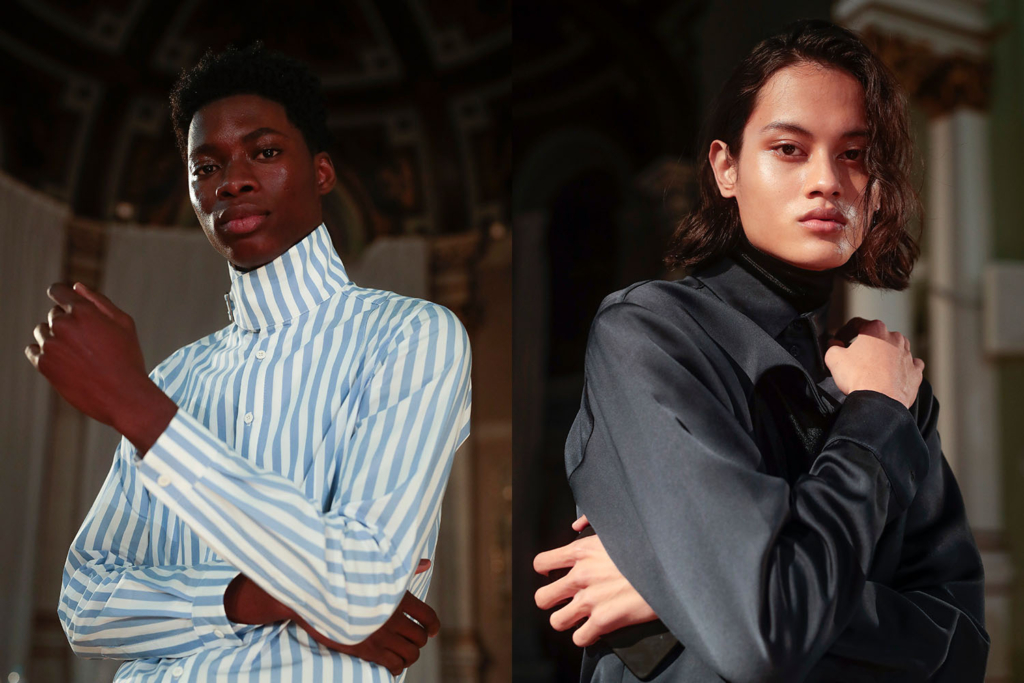
On Next in Fashion, you were the runner-up to Minju Kim’s win. How do you feel about your participation in the show?
I have really fond memories of the show, I really enjoyed filming it. I am so pleased that I did do it, I was very nervous going into it – it was the first season, so we had no idea what it was gonna be like, and I had this horrible idea that it could be terrible and it would ruin my career and no one would take me seriously afterwards, but I think it was edited very well and really showed how designers actually are in the industry. I am very good friends with loads of designers here in London, and we all support each other and we go to each other’s shows. I think that was reflected in the show. It also exposed the brand, and me, to a much wider audience than we were reaching before.
Coming second, actually… I’m really grateful to even have come second. Minju is a fantastic designer, and I think she’s so forward-thinking and, on a personal level, I really care for her and we get on so well. Her journey was so beautiful on the show, she really blossomed and found her confidence. For that alone, I’m just glad I was there to have that journey with her, and am so pleased to see everything that she’s done since.
What’s next for Daniel w. Fletcher?
We have a big collaboration with Courvoisier, a French cognac brand, coming out. I’ve designed a bottle for them. There’s 200 of them, they’re gonna be sold exclusively with Harrods. I’ve hand-painted all of them, actually, and there’s some apparel that goes with it, like a shirt that’s also going to be sold exclusively at Harrods. And then in June we will have the first release of our AW collection.
We also have an atelier opening with Courvoisier at the end of May, which is gonna have workshops and events over a weekend in London. That’s something that’s very important to me: engaging with our customers, and not just being a brand that does an exclusive fashion show every six months. It’s a more inclusive, community-driven brand, as much as it is about fashion.

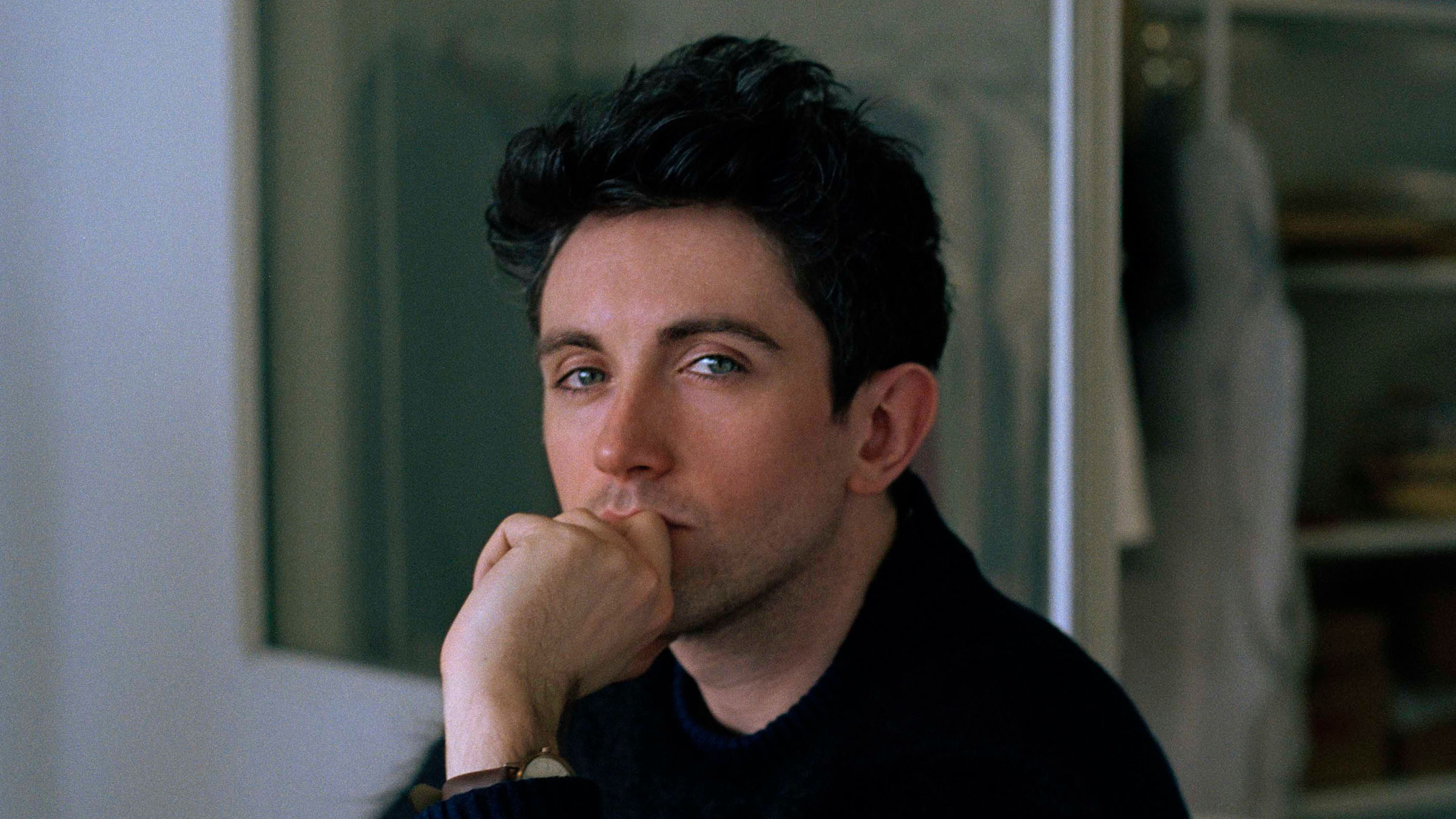
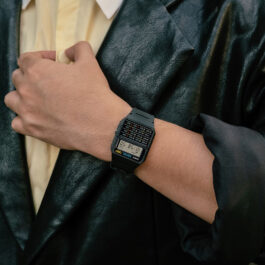
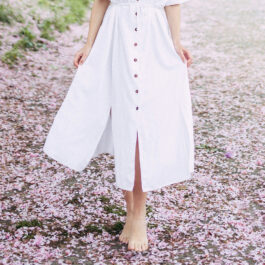
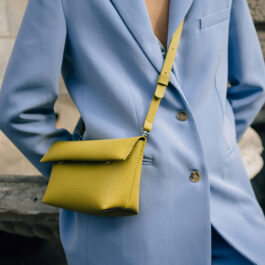
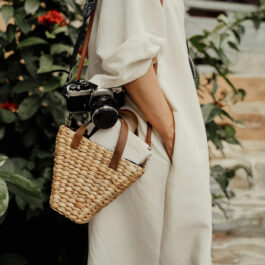

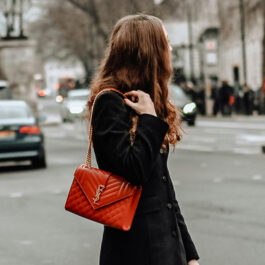
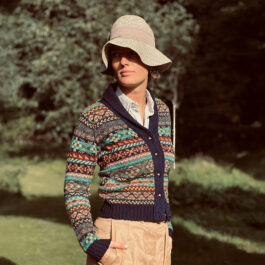
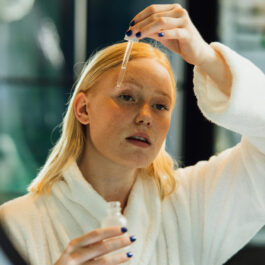
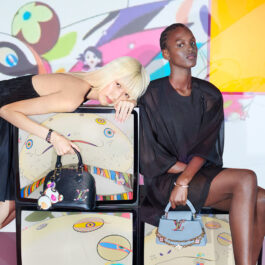
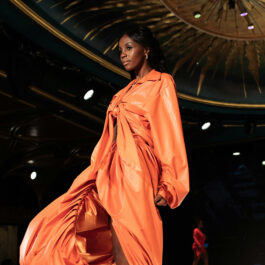
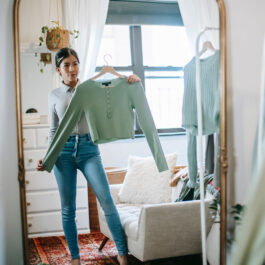
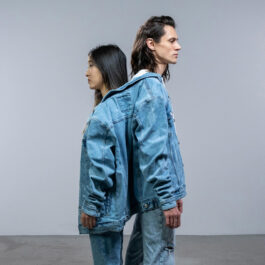
Sorry, the comment form is closed at this time.